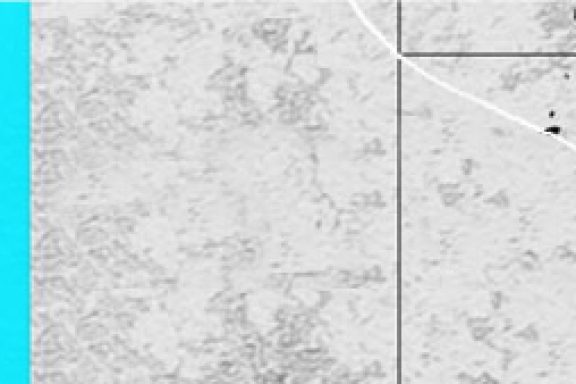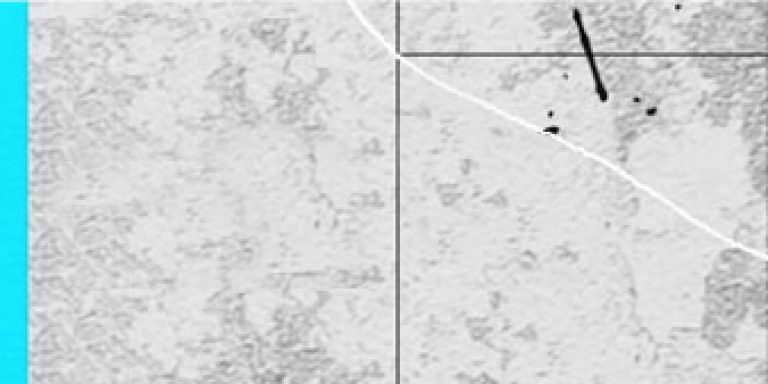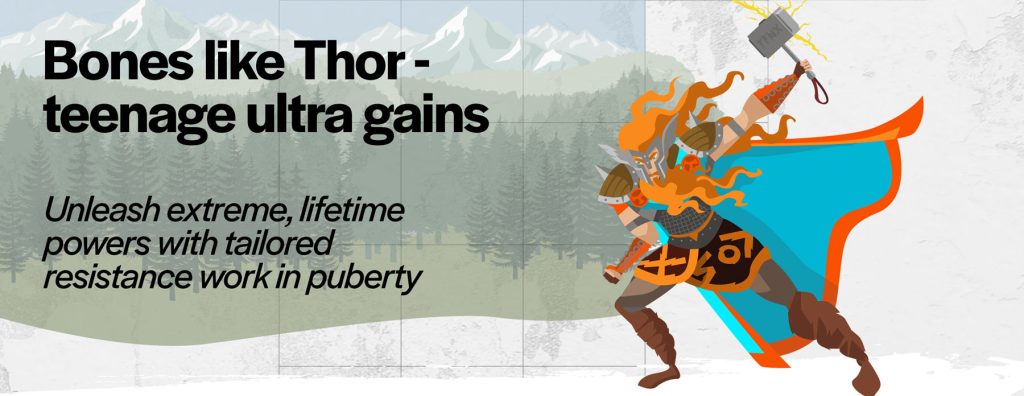Jumps, sprinting, pulling or pushing – the more you fit in as a youth, the more you extend your limits for a life in sports.
There is an amazing window from around age 10 to late teens when you can maximise bone strength for life with simple resistance training.
I’ll cover the remarkable shot you have in puberty to improve bone strength for life, but not before some background science.
Puberty flex loss
Believe it or not, when you were newly born you had about 100 bones more than you have now!
Fetal bones are almost cartilaginous. Back when you started crawling, in the middle of the bone, at the farthest point from the joints, cartilage started transforming into a denser material. Fast-forward a few years, and during puberty (10-17 years), this central part grows at its fastest rate ever, making long bones longer, fusing some together (e.g. in the skull) and consolidating the whole skeletal structure. This dramatically reduces your flexibility, as you might have noticed.
If you are 16+, then about 90% of your bones is real bone, with the exception of the extremities (epiphysis)*. Those extremities will completely ossify – become bone tissue – as late as age 25, arresting any sort of growth from that point on**.
What you can exploit right now is the immense capability of the powerhouse of growth situated at the two ends of each bone, the epiphyseal plates.
Is resistance training good?
Coaches used to think of epiphyseal plates as precious and likely to be stunted by resistance work, but more recent science has turned this upside down. All bones include osteoblasts – cells which are usefully described as “bricklayers”. Impacts, shocks and weight-bearing activate them! They detect whether the bone is stressed and needs to be repaired. Guess what? Your epiphyseal plates are packed with osteoblasts! Controlled impacts and weight-bearing trigger massive “bricklaying” projects and and make the bone grow super strong***.
Although non-coached activity will not be as effective as disciplined sports or activities it still contributes to a healthy bone formation****. Stay on the go!
What is resistance training?
Resistance training is anything that makes you act against a “considerable” force that opposes a resistance – jumps, sprinting, pulling or pushing.
1000 jumps every day won’t make you totally unbreakable! It is a start, but you will need a diet rich in calcium, you’ll need vitamin D from the sun and/or your diet and also adequate rest***. When you do select your training regime, aim to challenge your whole body. For example, running is fairly good to build bone density in your lower body but… not much else happens. It is like staring at the laundry: a lot of movement but nothing is really going on. Team sports (basketball, volleyball, rugby), martial arts, and gymnastics are way better in creating an all rounded healthy individual, especially (and I couldn’t stress this enough!) if associated with some weekly strength and conditioning sessions*****.
References
*Saggese G., Baroncelli G. I., Bertelloni S. (2002) ‘Puberty and bone development.’ Best practice and research for clinical endocrinology and metabolism, 16(1), 53-64.
**Kuh D., Wills A. K., Shah I., Prentice A., Hardy R., Adams J. E., Ward K., Cooper C., NSDH collection team (2008) ‘Growth from birth to adulthood and bone phenotype in early old age: a British cohort study.’ Journal of bone and mineral research, 29(1), 123-133.
***Dahab K. S., McCambridge T. M. (2009) ‘Strength training in Children and Adolescents: Raising the bar for young athletes?’ Journal of Sports health, 1(3).
****Cronholm F., Lindgren E., Rosengren B. E., Dencker M., Karlsson C., Karlsson M. K. (2020) ‘Daily schoold physical activity from before to after puberty improves bone mass and musculoskeletal composite risk score for fracture.’ MDPI – Sports, 8(40).
*****Faigenbaum A. D., Kraemer W. J., Blimkie C. J. R., Jeffreys I., Micheli L. J., Nitka M., Rowland T. W. (2009) ‘ Youth resistance training: Updated position statement paper from NSCA.’ Journal of strength and conditioning association, 23(5), 60-79.
Further reading
Lloyd, S. R, Oliver, L. J. (2014) Strength and Conditioning for young athletes: science and applications. London: Routledge.
Dimitri P.(2019) ‘The impact of childhood obesity on skeletal health and development.’ Journal of obesity and metabolic syndrome, 28, 4-17.
Farr J. N., Laddu D. R., Going S. B. (2014) ‘Exercise, Hormones, and skeletal adaptations during childhood and adolescence.’ Journal of Pediatric exercise science, 26(4), 384-391.





